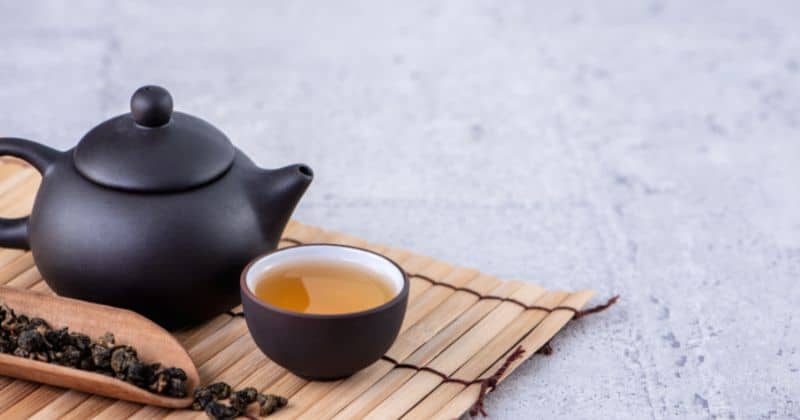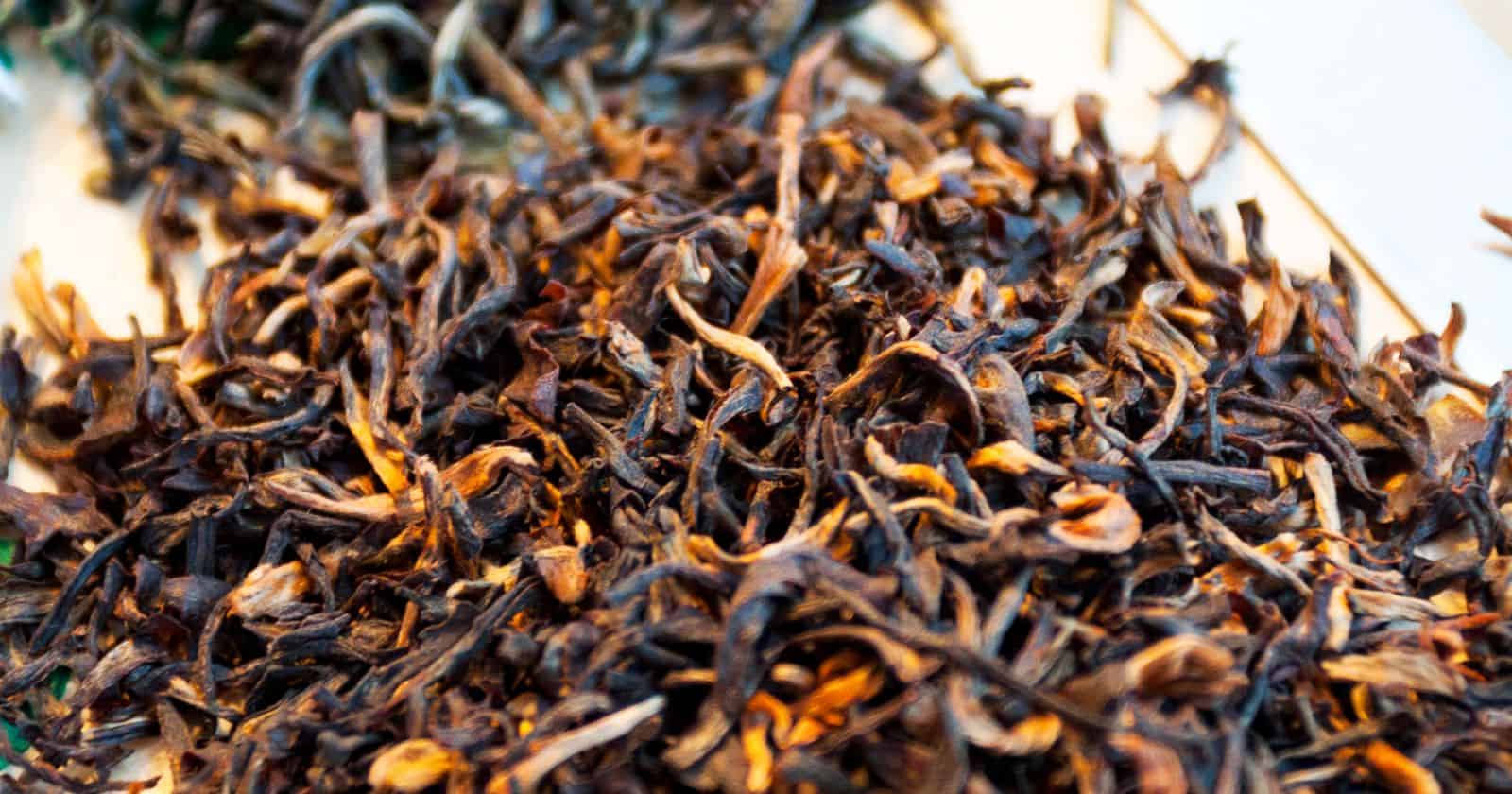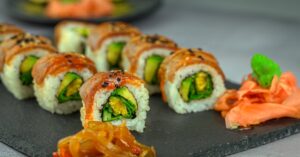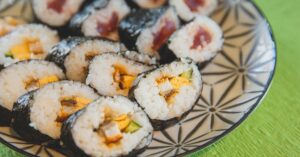Are you looking for something flavorful and different to
Beyond its culinary uses, its health benefits make it an ideal ingredient in everyday cooking.
In this article, we’ll explore the history of Assam tea as a
History Of Assam Tea As A Spice
Assam tea has a long and storied history as a
This tea was also believed to be able to treat simple illnesses such as the common cold, which is why it has been loved throughout the centuries for its many health benefits.

The first company established to grow and make Assam tea was called The Assam Tea Company, which was founded in 1839. At that time, they had over 160 tea gardens spread across the region, some of which remain under the same banner today.
Since then, Assam has become one of the largest producers of tea in the world and is now known for its high-quality black teas that are used to make breakfast teas.
In addition to being used as a medicinal aid and beverage ingredient, Assam tea is also widely used as an aromatic
Its earthy flavor pairs well with savory dishes such as curries and stews, while its sweet notes can enhance desserts like cakes or cookies. In India, it is often added to chai masala blends to boost flavor and aroma.
Assam tea can also be used in marinades or sauces for meat dishes like chicken or pork chops because it can tenderize proteins without overpowering other flavors.
Additionally, it can be infused into oils or vinegar for dressings or added directly into salads for an extra kick of flavor without any additional calories or fat content.
With so many uses and sweet and savory recipes, it’s no wonder this versatile
Harvesting And Preparation Of Assam Tea For Cooking

Harvesting Assam tea is a laborious process that requires skill and expertise. The leaves are picked by hand and sorted according to size, shape, color, and aroma. The leaves are then dried in the sun or an oven before being rolled into small pellets. This rolling process helps release the tea leaves’ flavor and allows for easier brewing.
Once harvested, Assam tea can be prepared for cooking in a few different ways. If you choose loose-leaf Assam tea, you’ll want to aim for about 1 teaspoon (around 2 grams) of tea per 8 ounces (240 ml) of water.
To prepare this Assam tea for cooking, put the leaves and water into a pitcher or glass container, cover it up, and put it in the refrigerator overnight or for at least 12 hours. This will allow time for all the leaves’ flavors to infuse into the water.
If pre-portioned Assam tea bags are preferred instead of loose-leaf Assam tea, they can also be used. Simply place one bag per 8 ounces (240 ml) of water into a pitcher or glass container and let steep overnight or at least 12 hours before using it in recipes calling for brewed Assam tea as an ingredient.
Regardless of which form is used – loose-leaf or pre-portioned bags – all brewed Assam teas must be dried afterward to remove any residual moisture that may have been left behind during steeping and create a shelf-stable leaf product that is safe to use in recipes calling for brewed teas as ingredients.
Drying can be done either naturally by air drying on racks or trays lined with paper towels over several days until completely dry; alternatively, it can also be done quickly with an electric dehydrator set at low temperatures until dryness is achieved without burning any part of the leaf product itself.
Tips and Tricks for Cooking with Assam Tea
- Use the right amount of tea leaves: For every 8 ounces (240 ml) of water, use 1 teaspoon (around 2 grams) of loose-leaf Assam tea or one pre-portioned tea bag when making an infusion. Use a large enough vessel to allow the leaves to develop their flavor during steeping fully.
- Steep the tea correctly: Brew the infusion using 90-95ºC (194-205ºF) water and steep for two to five minutes, depending on how strong you like your beverage.
- Use Assam tea in savory dishes: Add one cup of water, crushed spices, sliced ginger, and 1 teaspoon (around 2 grams) of loose-leaf Assam tea per 8 ounces (240 ml) of water in a saucepan and simmer until the flavors have developed and blended nicely. This will give your dish an extra layer of complexity.
- Use Assam tea in cold drinks: Put loose-leaf or pre-portioned bags into a pitcher or glass container and cold water to make an easy cold brew at home. Leave it in the refrigerator for at least 12 hours before straining out any remaining solids before serving over ice cubes. Add milk and sugar if desired.
- Use Assam tea when baking: Replace some all-purpose flour with finely ground dried leaves when making cakes or cookies to give them an earthy flavor that pairs nicely with sweet ingredients like chocolate chips or nuts. You could add some brewed liquid into frostings for a unique twist.
Pairing Assam Tea With Other Ingredients
Pairing with Desserts
- Complementary flavors: Pair lemon-flavored Assam tea with desserts with complementary flavors like vanilla or almond for a balanced flavor profile.
- Contrasting flavors: Pair strong lemon-flavored Assam tea with delightful desserts to create an exciting contrast between the two flavors and add complexity to the dish.
Pairing with Dishes
- Pasta dishes: Pair black teas from Assam with pasta dishes with garbanzo beans for an earthy flavor or with tomato water, eggplant, and ricotta salata for a more robust flavor profile.
- Quesadillas: Pair black teas from Assam with quesadillas made of black beans for added depth and richness of flavor.
Pairing with Drinks and Cocktails

- Cold brewed Assam tea: Make cold brewed Assam tea by putting the leaves in filtered water and placing it in the refrigerator overnight or up to 12 hours before serving.
- Complementary flavors: Add complementary flavors like lemon or almond to drinks or cocktails made with cold brewed Assam tea for balance.
- Contrasting flavors: Add sweet fruits to drinks or cocktails made with cold brewed Assam tea for complexity in taste and aroma.
Storage And Shelf Life Of Assam Tea
Like all types of tea, it is crucial to store Assam tea properly to maintain its quality and flavor. The best way to keep Assam tea is in an airtight container away from light, heat, moisture, and odor. This will help preserve the flavor and aroma of the tea for as long as possible.
The shelf life of sealed package Assam tea can last from 12 months to 36 months when stored properly.
Loose-leaf Assam teas have a shorter shelf life since they are more susceptible to absorbing moisture and odors from the environment. If you plan on storing loose-leaf Assam teas for longer than a few weeks, keeping them in an airtight container or vacuum-sealed bag away from any potential contaminants is best.
Additionally, it’s important not to wait too long before drinking your Assam teas; otherwise, you may lose out on some unique flavors and aromas that make it so special!
When storing your Assam teas at home, be sure not to mix them with other foods that may affect their taste or smell, such as dairy products like milk or cheese, which have shorter shelf lives than most teas due to their higher water content and sensitivity towards bacteria growth.
Additionally, suppose you plan to keep your loose-leaf teas longer than a few weeks. In that case, they should be kept refrigerated since this will help slow the oxidation process, which can cause them to lose their flavor over time if left out at room temperature for too long.
Substitutes for Assam Tea When Cooking
Assam tea is a unique ingredient that adds a distinct flavor to dishes. Several options are available if you don’t have access to Assam tea or prefer to use a substitute. Here are some substitutes for Assam tea when cooking:
Darjeeling tea
Darjeeling tea is another Indian black tea with a more delicate and floral flavor than Assam tea. It can be used as a substitute in recipes that call for Assam tea, particularly in desserts or dishes with a milder flavor.
English Breakfast tea
English Breakfast tea is a blend of black teas, including Assam tea. It can be used as a substitute for Assam tea in recipes that require a strong black tea flavor, such as in curries or stews.
Ceylon tea
Ceylon tea is a black tea grown in Sri Lanka with a milder flavor than Assam tea. It can be used as a substitute in recipes where a less robust tea flavor is desired.
Lapsang Souchong tea
Lapsang Souchong tea is a smoked black tea from China with a bold, smoky flavor. It can be used as a substitute for Assam tea in recipes with a desired smoky flavor, such as marinades or meat dishes.
Coffee
Coffee can also be used as a substitute for Assam tea in some recipes, particularly in desserts or dishes where a strong and bold flavor is desired. However, it is essential to note that coffee has a distinct flavor that may not be suitable for all dishes.
When using these substitutes, it’s essential to keep in mind that they will each have their own unique flavor profile and may need to be adjusted accordingly in recipes.
Additionally, each tea’s strength and brewing time may vary, so it’s essential to follow the instructions for each specific type of tea to get the best results.
Where To Buy Assam Tea?
Assam tea can be found at many grocery stores, specialty tea shops, and online retailers. Look for loose-leaf Assam tea or pre-portioned tea bags, and choose from various grades and blends based on your preferences.
Online retailers may offer a more comprehensive selection of Assam teas from different regions and at varying price points. When purchasing Assam tea, consider the freshness and quality of the tea, as well as any additional certifications, such as fair trade or organic.
With so many options available, you will find a delicious, high-quality Assam tea that suits your taste and budget.





